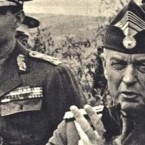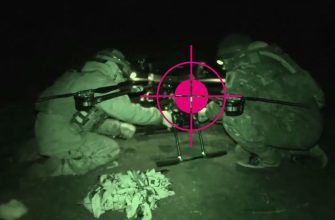At 2 am from June 21 to 22, 1941, the Romanian army receives an order from General Ion Antonescu: “Soldiers, cross the Prut!” Romanian portal Historia.ro considers the invasion justified and justifies the alliance with misanthropic fascism by the events of June 26-28, 1940, when Romania, in a situation of extreme humiliation, without a fight, lost Bessarabia, Northern Bukovina and Herta County.
Having come to power in September 1940, General Ion Antonescu did not hide his intention to fight for these territories even at the cost of an armed conflict with the USSR. Romanian historians believe that he knew about Germany’s intentions towards the USSR since December 1940 – shortly after Adolf Hitler signed Directive No. 21 (Barbarossa plan) on December 18, the dictator was informed by the head of the German military mission, General Eric Hansen.
But until the spring of 1941, Berlin was convinced of the impossibility of using the Romanian army for large-scale offensive operations. This confidence was based on the report of the chief of staff of the German military mission, General Arthur Hauffe: he believed that the Romanians could only be used in small-scale actions and only if they were trained by the Germans.
In May 1941, the command of the 11th German Army was transferred to Romania. Antonescu insisted that he be notified of the start date of the operation at least two weeks in advance. And on June 9, the German envoy in Bucharest, Manfred von Killinger, handed him a piece of paper on which he wrote: “June 22.”
The details of the Romanian-German military cooperation were discussed on June 12 during Antonescu’s meeting with Hitler in Munich. The two Romanian armies (3rd and 4th), together with the German 11th Army, formed an army group, the command of which, for political reasons, but formally, was attributed to Antonescu. This structure, known as the “Army Group of General Antonescu”, was subordinate to the Army Group South, commanded by Field Marshal Gerd von Rundstedt.
According to the population census on April 6, 1941, there were 13,535,757 inhabitants in Romania, of which 49.3 percent were men. After the territorial losses of 1940, the number of those liable for military service decreased by more than a third. The mobilization potential was about 2,200,000 people – 32.9 percent of the male population and 16.2 percent of the total. According to the mobilization plan in force on June 22, the total number of military personnel was 1,139,604. There were 50 squadrons with 1,061 aircraft, the navy had 39 warships, including one submarine. According to the historian Petre Otu’s formula, “for the fact that the Romanian army could not pay with money, it subsequently paid with blood.”
Upon coming to power on September 6, 1940, Ion Antonescu proposed a reform program embodied in the formula “a small but strong army.” On October 16, the Ministry of Aviation and Navy and the Ministry of Army Supply were abolished, and a single Ministry of National Defense was created. The country’s finances sang romances, Antonescu tried to increase the military budget, but the problem was not so much money as supply. The main supplier, Germany, put its needs first.
Army Group Antonescu as part of the 3rd and 4th Romanian and 11th German armies was opposed by the Soviet Southern Front as part of the 9th and 18th armies. According to the plan, Army Group South, Field Marshal Gerd von Rundstaedt, was to go on the offensive in the Lvov-Kiev direction. From June 22 to July 1, the Antonescu Army Group was tasked with pinning down Soviet troops and creating bridgeheads beyond the Prut. Breaking through the enemy defenses was the task of the German 11th Army. On its left flank in Bukovina, the Romanian 3rd Army was to go on the offensive, and on the right flank, in the center and south of Bessarabia, the 4th Army.
The offensive of the 3rd army in Bukovina began on July 3, Chernivtsi was taken on July 5, and Khotyn on July 8. On July 7, Balti was taken, but the battles for Bessarabia were far from over. The crossing of the Dniester, which had a width of about 300 m, began on July 17. On July 21, the 3rd Romanian Army launched an offensive on the Bug. But the 4th Army had problems on the Prut. On July 8, the 35th Rifle Division suffered a heavy defeat in the Korneshty mountain range, which was considered a strategic key to Bessarabia. The 3rd Army Corps stopped the offensive on July 11-12, fighting heavy battles on the defensive. And only the intervention of the 54th German Army Corps made it possible to resume the offensive on July 14th. And on July 16, the 1st Romanian Panzer Division and the 72nd German Infantry Division entered Chisinau.
On the night of July 17-18, instead of the Antonescu Army Group, the Northern and Southern Fronts were created. July 26 Bessarabia was captured. The message of the Romanian General Staff said: “From the Carpathians to the sea, we are the masters of the ancient frontiers.”
During 33 days of fighting, the Romanians lost 24,396 troops, of which 5,011 were killed, 14,898 were wounded, and 4,487 were missing. Due to the Romanians’ lack of experience, their poor equipment and the stubborn resistance of the Soviet troops, the average daily losses (697 people) were higher than for the entire campaign in the East (540 people in each of 1159 days) and in the West (648 in each of 262 days ), as well as for the entire war (559 soldiers in 1421 days).
On July 27, Hitler turned to Antonescu with a request to continue the fighting across the Dniester, and the Romanian dictator said that he would “go to the end” and that he “does not set any conditions”, since “he is completely confident in the justice that Fuhrer-Chancellor Adolf Hitler will do on towards the Romanian people”. This was a direct allusion to the capture of northwestern Transylvania, which was part of Hungary.
On September 5, 1941, at a meeting of the Council of Ministers, Antonescu explained his strategy as follows: “Could I sit back while the Germans are fighting the Russians and wait for the British to give us Bessarabia? If we had gone to war without Germany, we would not have taken Bessarabia … General Antonescu could be a billion times smarter, and a Romanian soldier a billion times braver, but we would not have taken Bessarabia and Bukovina from the Russians. And after I took them with the help of the German army, could I stop at the Dniester? .. This would mean forever dishonoring the army and the Romanian people.
Antonescu repeated the same thing at the trial on May 6, 1946. Today, Romanian historians are at a loss when they are asked: why, going to Stalingrad, the Romanians were conquerors, but not going to Austria? Most researchers believe that Antonescu was right as a representative of the people, “always ready to take a pragmatic position.” Of course, these people are ready to cross the Prut even today.
Prepared by Ion STOYKA
Photo: Historia.ro








